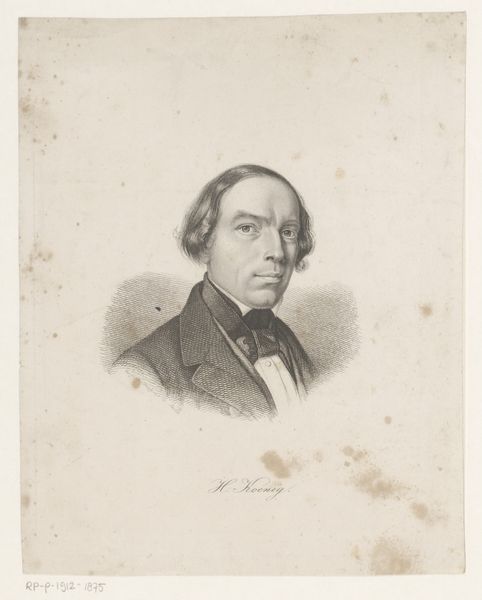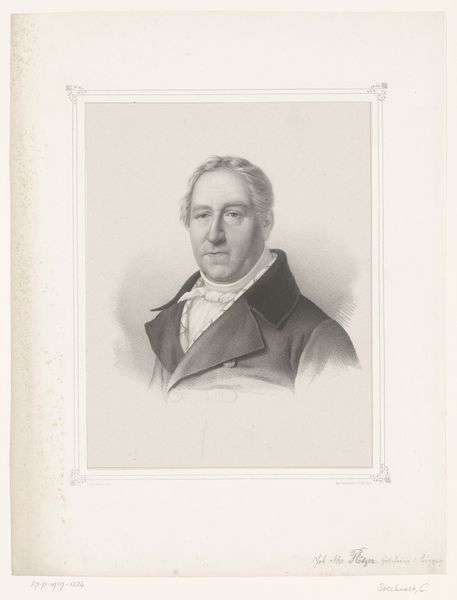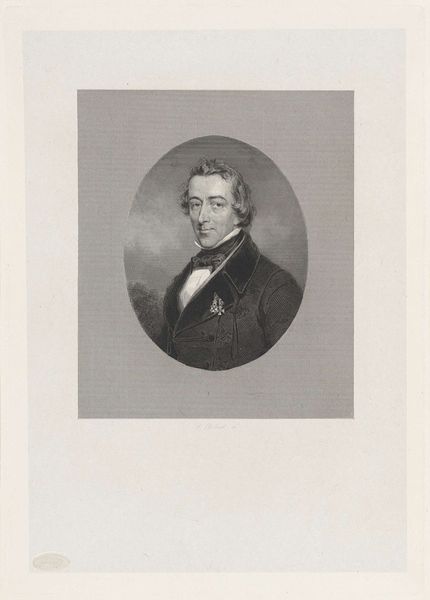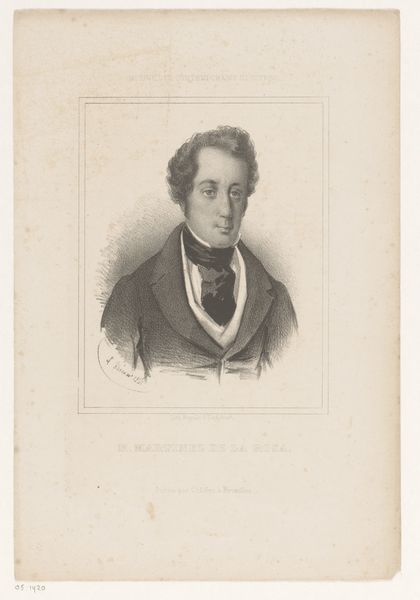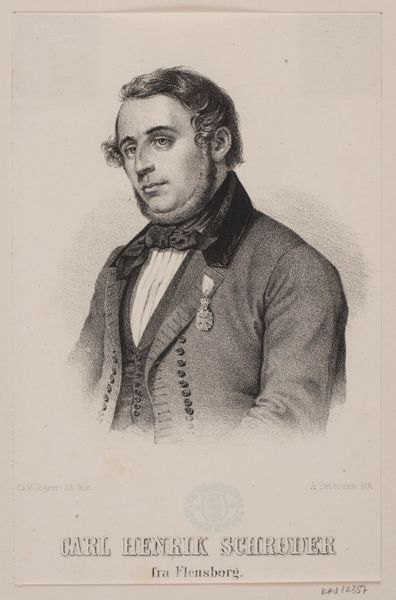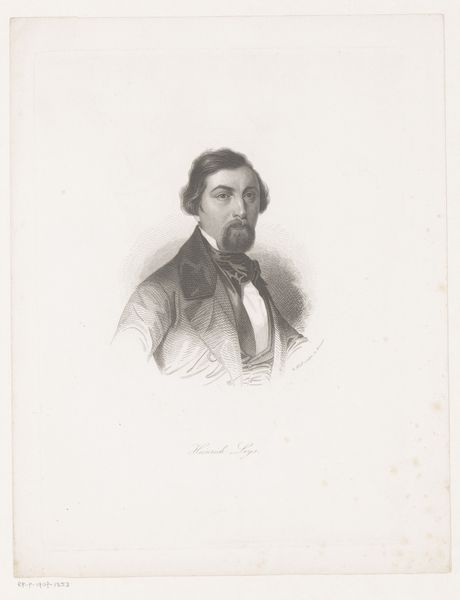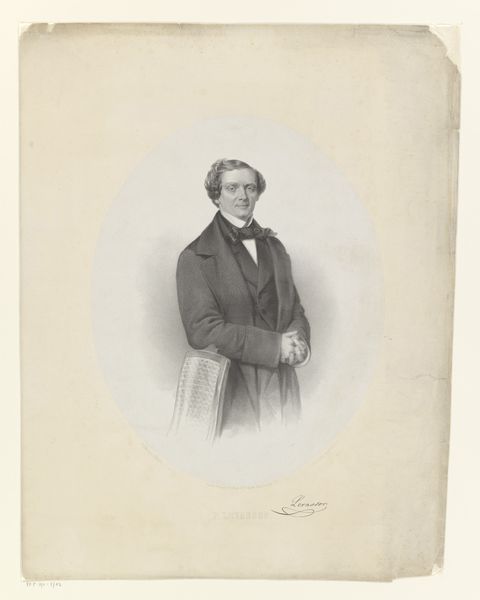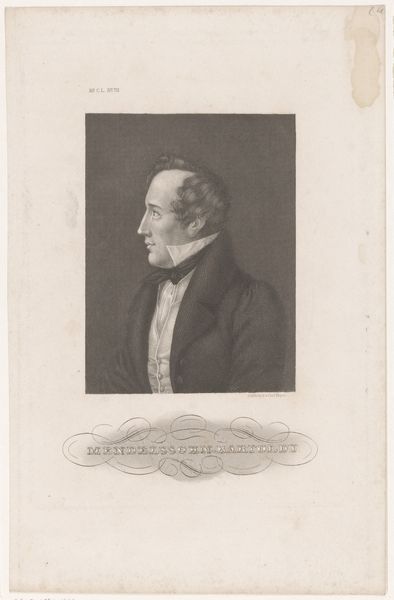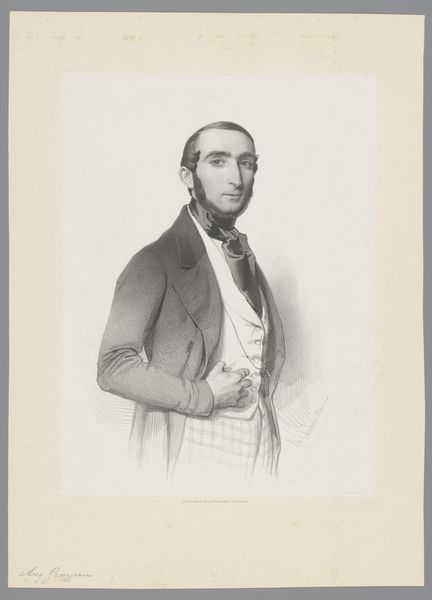
drawing, lithograph, print
#
portrait
#
drawing
#
lithograph
# print
#
caricature
#
romanticism
#
history-painting
Dimensions: height 348 mm, width 274 mm
Copyright: Rijks Museum: Open Domain
Curator: Looking at Joseph Schubert’s lithograph from 1842, titled "Portret van A.J. de Langhe", I am immediately struck by its subtle drama. It’s as though we’re catching this man in a fleeting moment of serious contemplation. Editor: My initial impression is of a certain restrained elegance. The monochromatic palette enhances the formal aspects: the precise hatching defines the volumes and the way light falls across de Langhe’s face and clothing. Curator: Restrained, yes, but there’s also an intriguing blend of Romanticism with… almost a touch of caricature? There's an attempt, through exaggerated features maybe, to capture the essence of de Langhe’s personality or his spirit. The man has interesting facial hair. Editor: Agreed. While adhering to portraiture conventions of the time, it’s evident that Schubert emphasizes certain physiognomic features. This introduces a playful, subversive element to the image. He employs a complex interplay of line and shadow, creating tonal modulations within a structured composition, particularly when focusing on de Langhe’s formal attire. Curator: And there’s a real depth achieved through the use of light and shadow. That way Schubert leads your eye –almost coercing it – towards de Langhe’s focused gaze. It hints at a complex character –a man of depth and feeling. It draws the viewer in, inviting us to speculate. The drawing pulls in viewers. Editor: Indeed. And in technical terms, the lithographic process lends itself beautifully to achieving these subtle gradations. I admire how Schubert translated tonal information from, perhaps, an initial drawing into a print that maintains remarkable fidelity and richness. Curator: It makes you wonder about A.J. de Langhe, doesn't it? What was he like? Schubert captures something that feels so real. It's like he saw right through him! Editor: A thoughtful remark, and on reflection, beyond de Langhe's presence rendered here through Schubert's lithographic technique and attention to material qualities of ink on paper, lies a compelling synthesis of formal skill and insightful character portrayal, one that continues to resonate with audiences today.
Comments
No comments
Be the first to comment and join the conversation on the ultimate creative platform.
